Amazon Fire Phone vs Apple iPhone 5s: the weigh-in
Does Amazon's new 3D-toting phone have what it takes to beat Apple's finest?
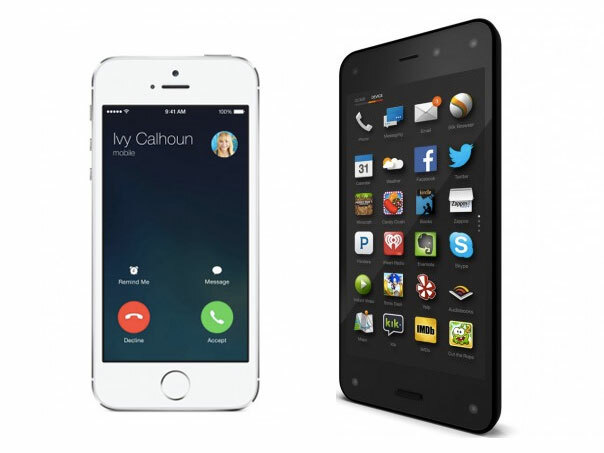
So Amazon’s finally joined the smartphone crew, launching its Fire Phone into an arena already crowded with iPhones, Androids and even the odd Windows Phone.
But while the competition may be fierce, Amazon’s debut handset still manages to stand out thanks to its 3D screen, built-in tech support, top-notch camera and world-scanning Firefly feature.
Of course the first thing we want to do as soon as we see a new phone is compare it to its rivals. So how does it shape up against Apple’s finest the iPhone 5s?
READ MORE: Amazon Fire Phone preview
DESIGN AND BUILD
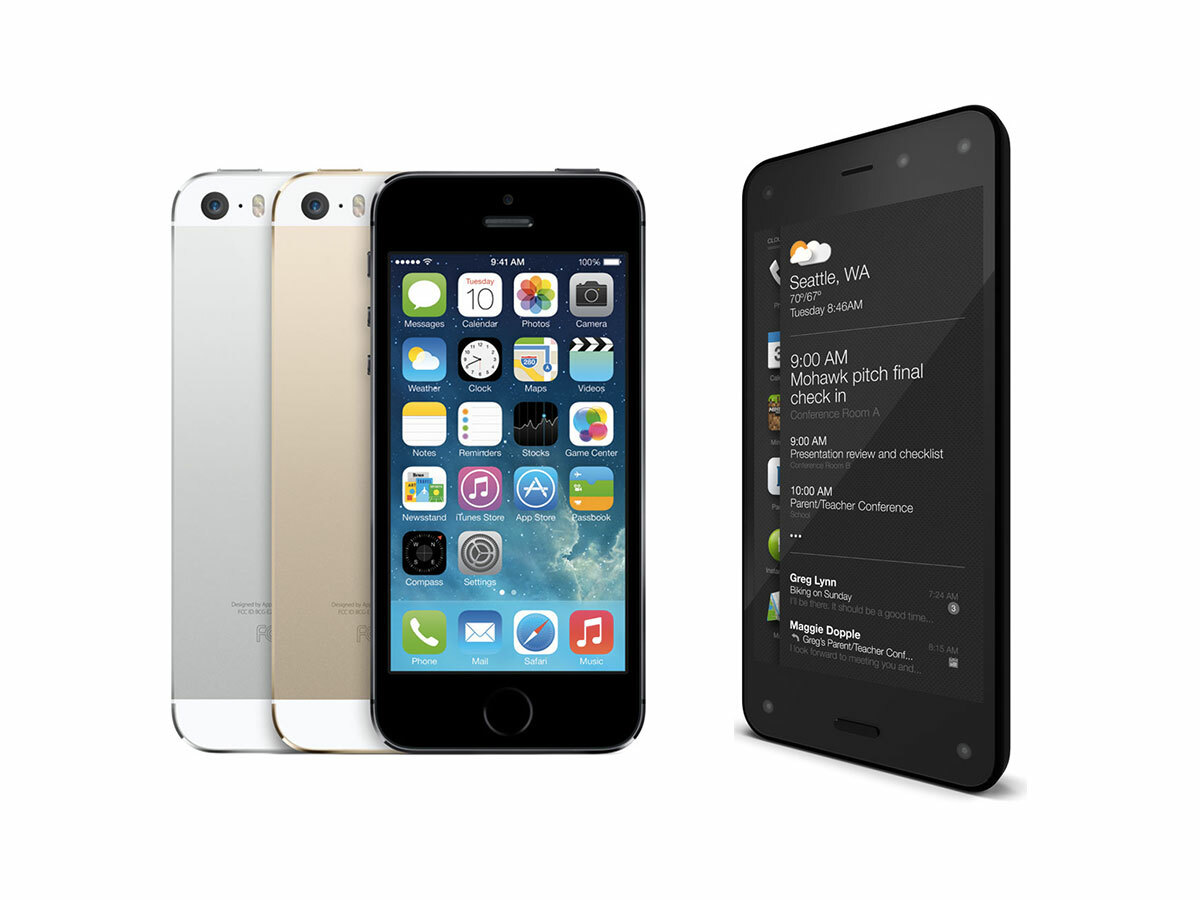
The Fire Phone doesn’t stray too far from the tried-and-tested as far as design goes. It looks like a smartphone, it’s shaped like a smartphone, it is a smartphone. It’s a nicely built one though, with a rubberised body, Gorilla glass on both the front and back and expertly machined aluminium buttons.
It has a 4.7in screen and dimensions of 139×66.5×8.9mm, which makes it bigger than the iPhone but smaller than every flagship Android out there. All that glass makes it heavier than the likes of the Samsung Galaxy S5 – 160g to the S5’s 145g, although you’re unlikely to notice much difference in use.
The iPhone 5s is smaller. It has a 4in screen, measures 123.8×58.6×7.6mm and weighs a lot less than the Fire: a mere 112g. Like the Fire Phone it’s beautifully built, with an aluminium shell and typically Apple attention to detail.
In short, both phones have premium builds and classy looks. We might change our opinion once we’ve actually seen the Fire Phone in the flesh, so to speak, but until then this round’s a tie.
Winner: Draw
SCREEN
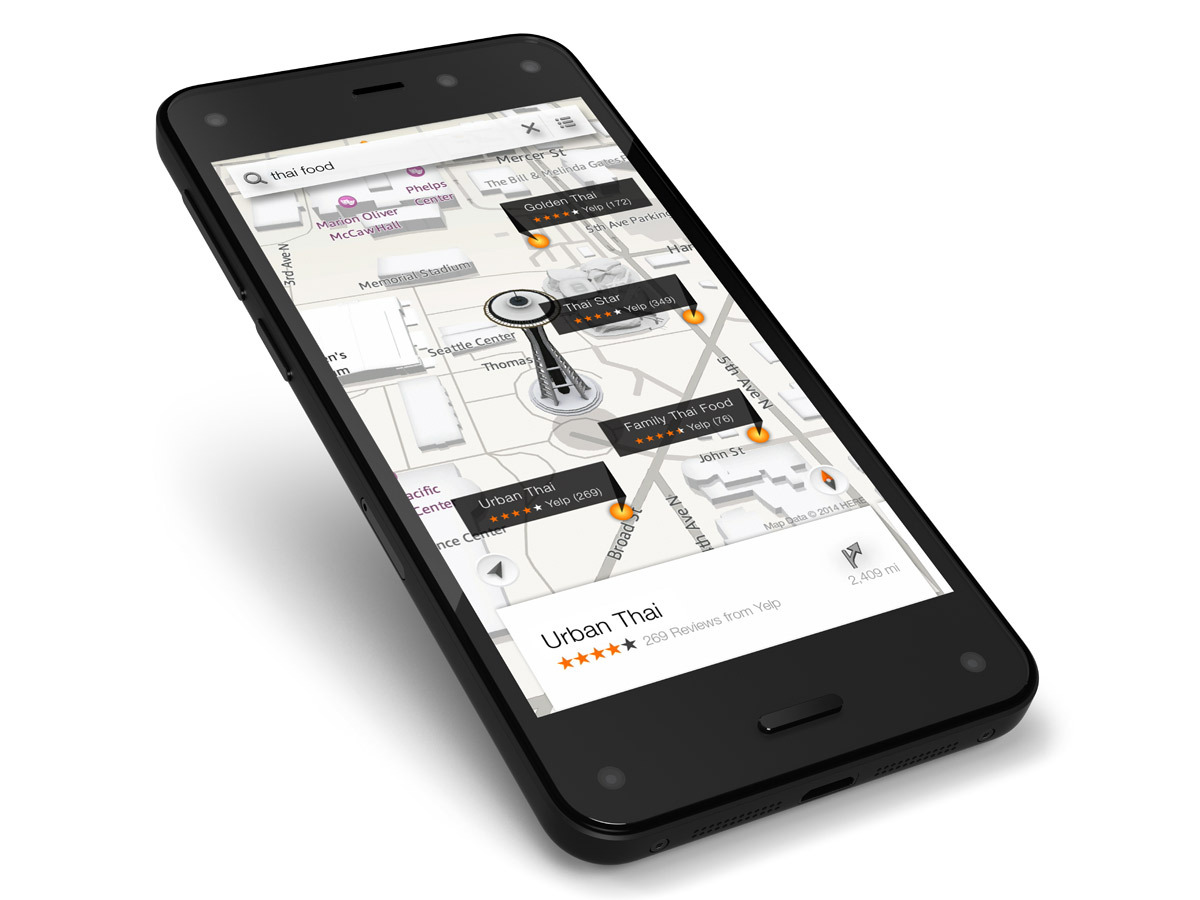
On specs alone the Fire Phone’s display is a disappointment. With a resolution of 1280×720 – that’s 315ppi – it looks decidedly antiquated next to the 1080p screens of the Samsung Galaxy S5 and HTC One (M8), let alone the 2K display of the LG G3.
Against the 5s, though, it’s a close-run thing: the iPhone’s 1136×640 resolution isn’t too hot itself, and its 326ppi is near enough to the Fire Phone’s that you’d barely spot the difference in pixel density.
But there is one significant advantage to the Fire Phone – it’s 3D. Well, kind of. On the front of the handset sit four cameras – one in each corner – which track the position of your head and calculate how you’re looking at the screen. Through some clever software tricks it then displays an image which appears to have depth.
This differs from the standard 3D method of making images appear to come out of the screen, and has several uses – you can, for instance, look to the side of labels on a map in order to read the text underneath. Or look behind objects in games. Or simply marvel at the various 3D-effect lock screens.
Is it genuinely useful? It’s too early to say. Developers have the potential to create some truly innovative apps for the Fire’s 3D screen, so we’ll remain tentatively optimistic for the time being.
Until we wrap our hands around some mind-blowing 3D apps though, it’s another draw for now.
Winner: Draw
CAMERA
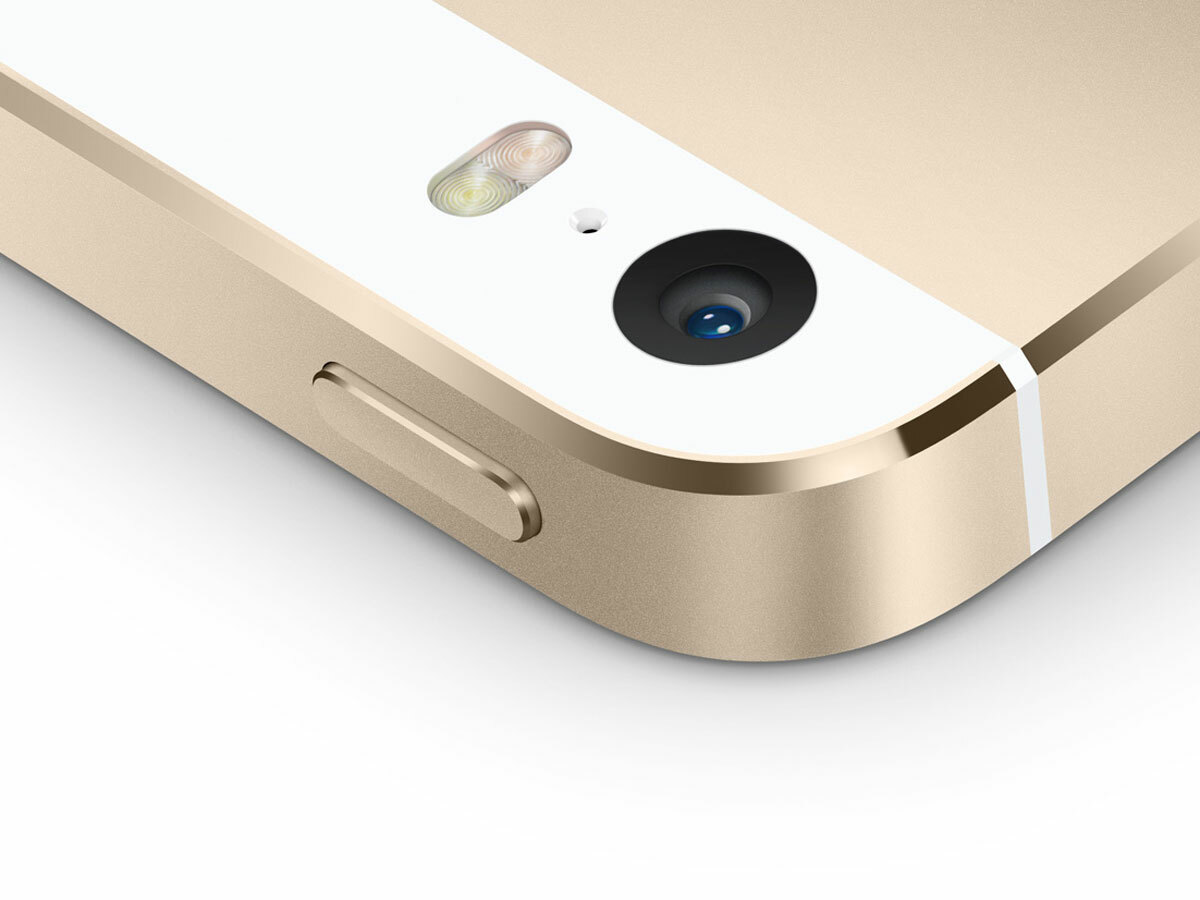
The iPhone 5s is generally regarded as having one of the best smartphone cameras around, and like the Nokia Lumia 1020 – it’s constantly used as a benchmark to measure the imaging prowess of rival devices.
The iPhone 5s’ 8MP camera produces more detailed, more accurate shots than many of its 13MP Android competitors, so the Fire Phone’s 13MP camera isn’t guaranteed to be the superior snapper, despite the extra megapixels it offers.
The iPhone’s dual-LED amber/white flash could mean that its colours will still be more accurate, especially with skin tones.
The Fire Phone, like the LG G3, also offers optical image stabilisation, which, on paper, means it should cope well with movement and low-light shots.
Both cameras have their advantages. Until we’re able to examine shots taken with both devices in supervised conditions, this is a draw too.
Winner: Draw
Software
This isn’t the typical case of Android vs iOS. While the Fire Phone is technically running Android, it’s a very heavily modified version called Fire OS v3.5 – and its unrecognisable from stock Android.
The bad news is that the Fire Phone lacks the official Google Play Store and Google apps. Not only does that mean no Gmail, Google Maps, Play Music or Hangouts, it also means that users will have to settle for Amazon’s Android App Store.
While Amazon’s alternative app storefront has plenty of apps to fill its shelves, there’s no escaping the fact that the official Play Store has more.
The iPhone 5s therefore comfortably beats the Fire Phone when it comes to both the number of apps, and the quality of those on offer.
The Fire Phone does fight back with a few Amazon exclusives however. Its Mayday feature is ideal for the less tech-savvy, serving up a direct connection to an Amazon helper who can help troubleshoot problems in real time.
Amazon’s Firefly feature is also rather impressive. It lets you take photos of everything from CDs to books, as well as having the ability to recognise songs and films. Naturally, it will provide an Amazon link to everything it recognises, letting you snap up things you like the look of with just a few clicks.
We go into detail regarding iOS 7’s gorgeous looks and features in our full in-depth review, but from what we’ve seen, it offers a sleeker, prettier user experience. That, coupled with its superior app selection, gives this round to the Apple camp.
Winner: Apple iPhone 5s
PERFORMANCE
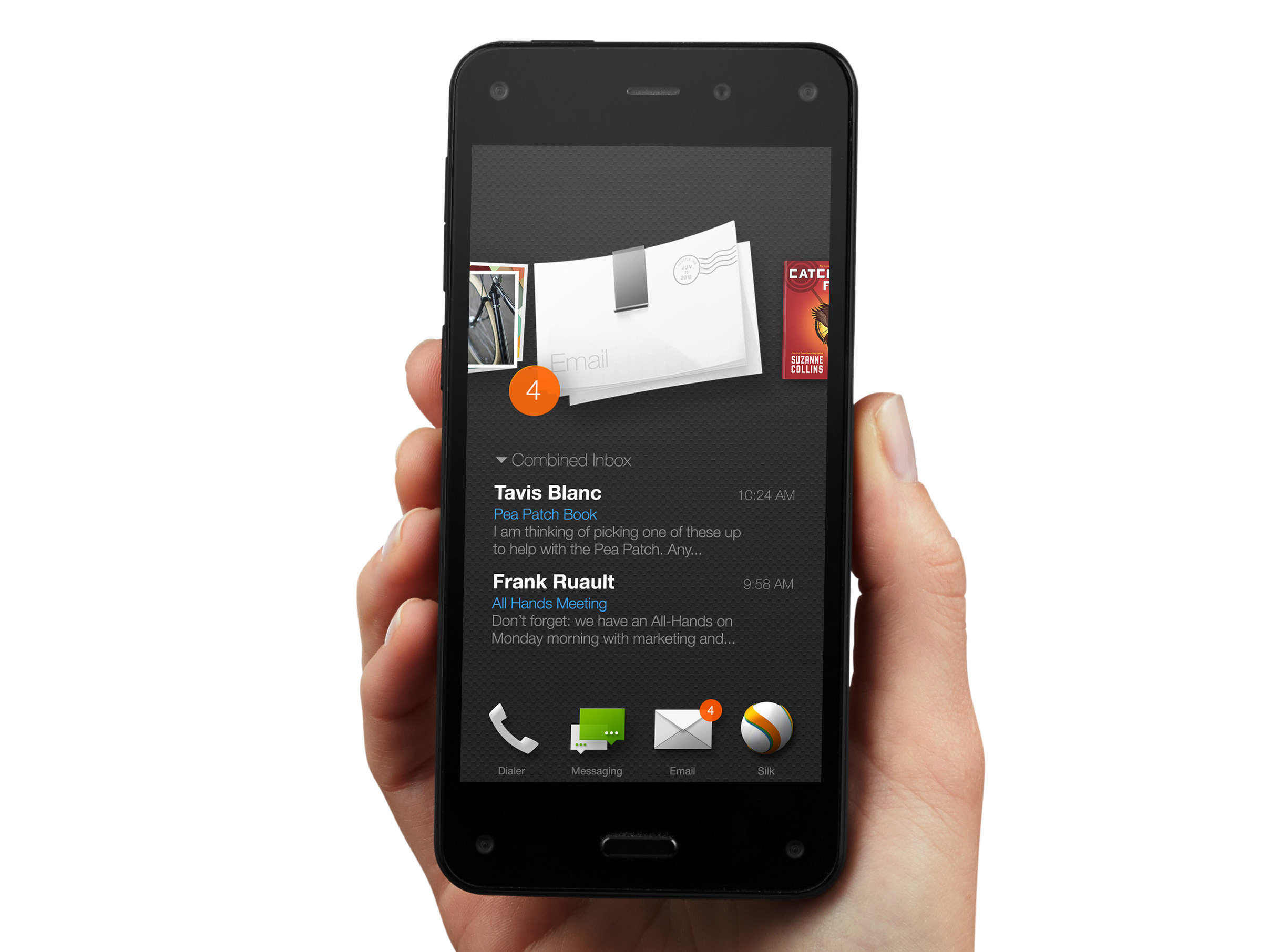
The iPhone’s A7 chip slightly outperforms the Fire Phone’s Snapdragon 800 in numerous Anantech benchmarks, but for all intents and purposes – given the smoothness of other Snapdragon 800 Android devices like the LG G2 when compared to the iPhone – both devices should perform equally smoothly.
The Fire Phone’s 2GB or RAM compared to the iPhones 1GB is an advantage on paper, but in practice we’ve found that this tends to make no difference to the slickness or multitasking of iOS.
Winner: Draw
Battery

The Fire Phone has a larger battery than the iPhone 5s (2400mAh vs 1560mAh), so it should last longer than its Apple rival in general use.
Amazon lists the Fire Phone as having up to 65 hours of music playback and up to 285 hours of stand-by time, while the iPhone hits 40 hours and 250 hours respectively.
Winner: Amazon Fire Phone
INITIAL VERDICT

Until we get the Fire Phone in our hands to test out its camera and 3D display and more, a lot of these categories will remain draws.
Our initial impressions, based purely on the paper-based specs of both devices, have us choosing the iPhone 5s, mainly due to the superior app selection.
This could very well change if we feel that the Fire Phone has more to offer in our full review however, so stay tuned.
Winner: Apple iPhone 5s
READ MORE: These are the top 10 best smartphones in the world




